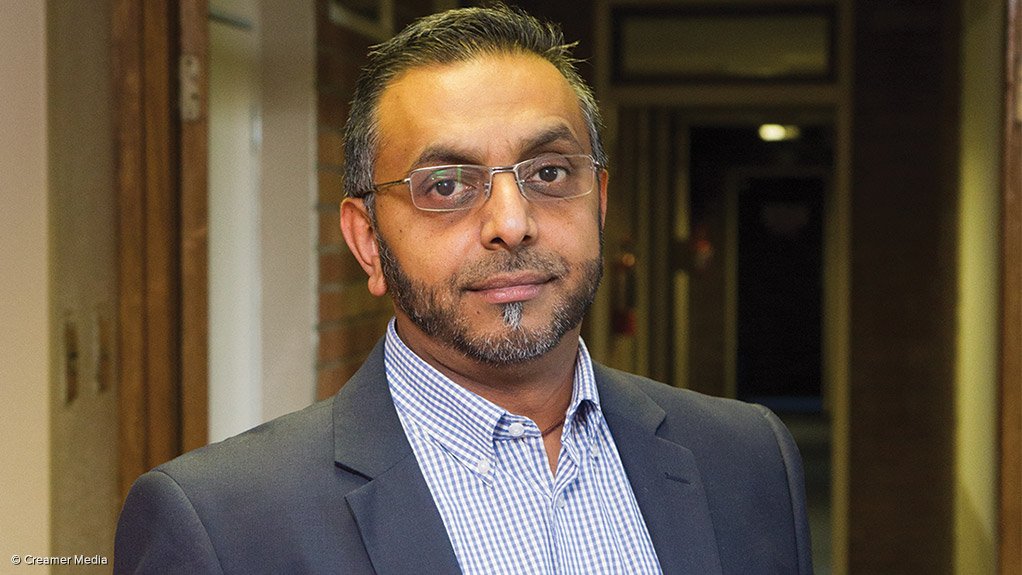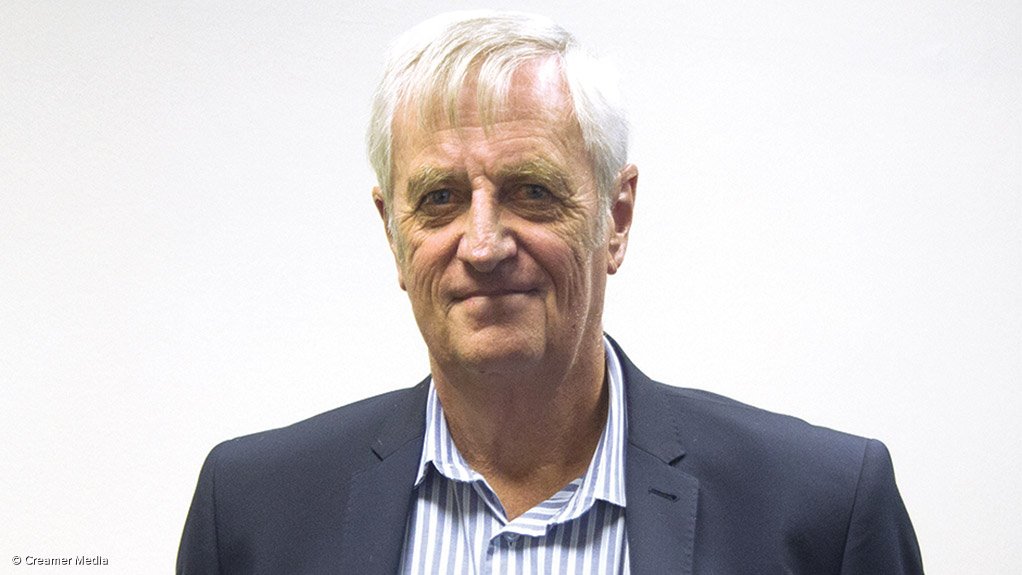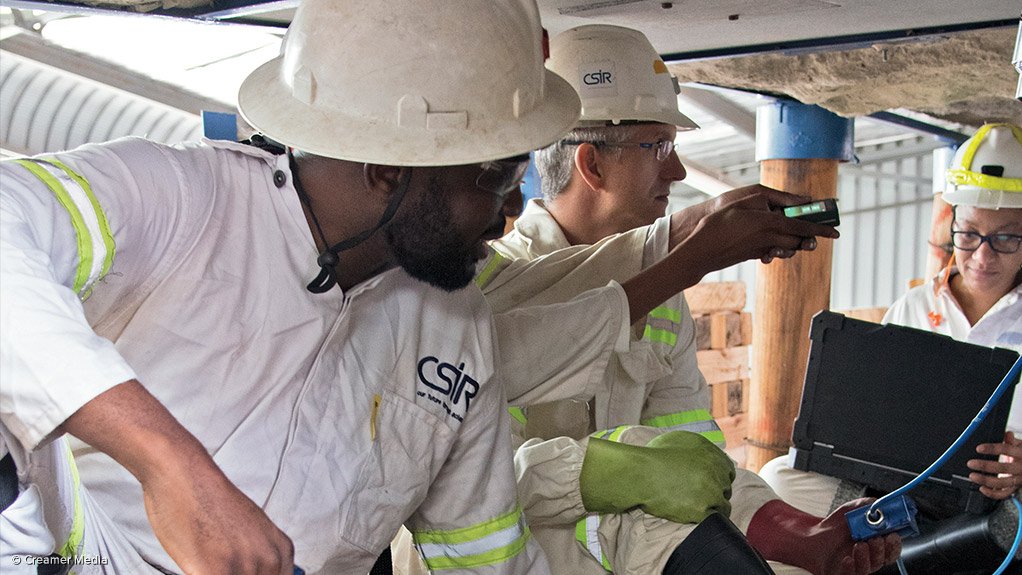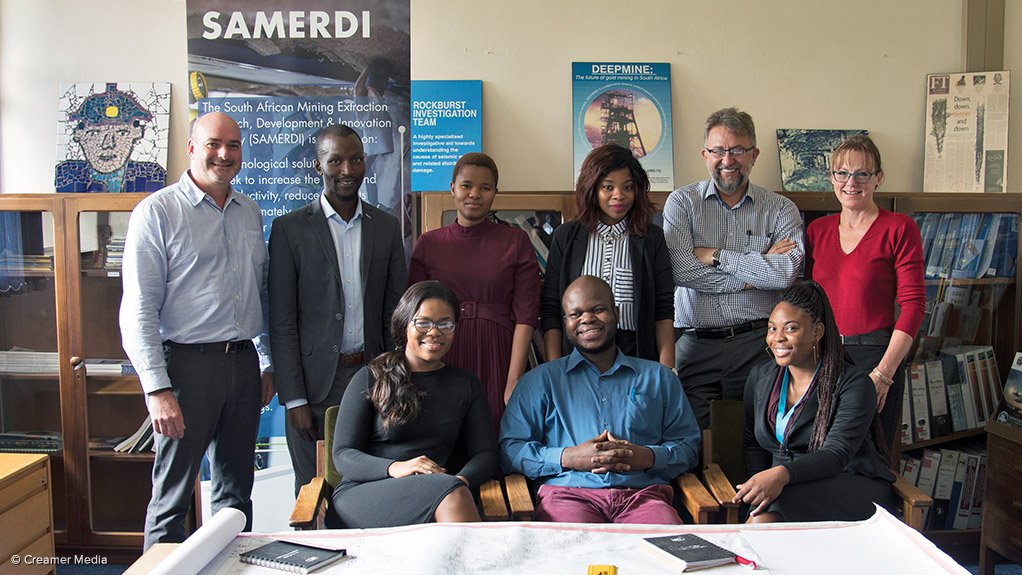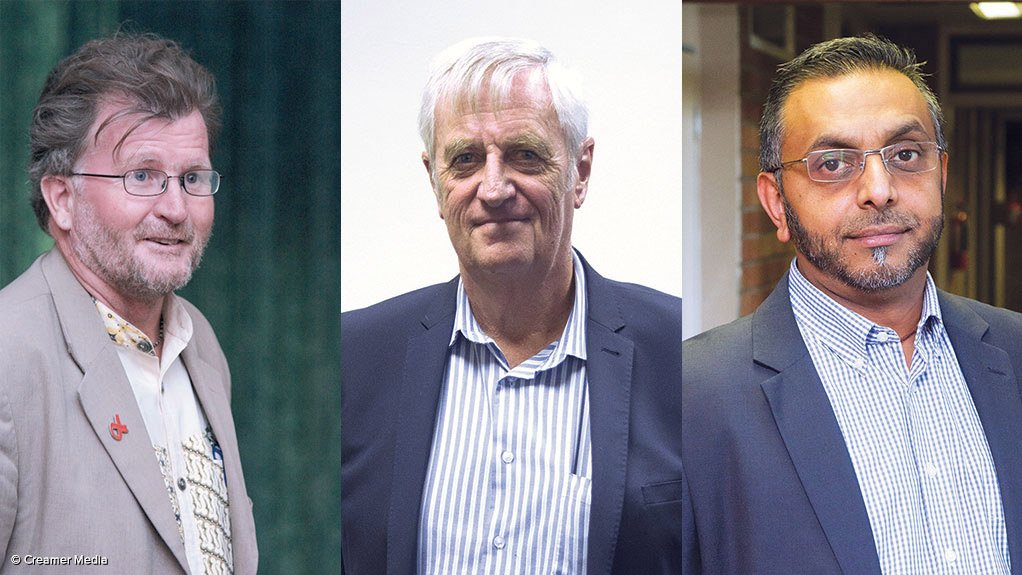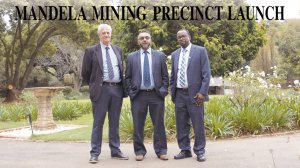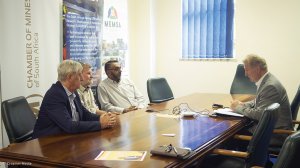The new Mandela Mining Precinct will be officially opened on May 4 to revitalise and modernise South Africa’s high-potential but struggling mining industry.
The official launch of this exciting public–private partnership in Carlow Road, Johannesburg, follows more than a year of the intense development of South Africa’s first coherent, collaborative agreement of government, mining companies, local equipment manufacturers and the research community to ensure the longevity of the South African mining industry, which is heading for a sharp projected decline under current conditions.
The Council for Scientific and Industrial Research (CSIR) and the Chamber of Mines (CoM), in collaboration with the newly established Mining Equipment Manufacturers of South Africa (MEMSA), have developed the vital mining research and development (R&D) programmes that will guide mining’s revival and modernisation.
The pressure is on the researchers to improve mine safety and health significantly, turn the tide on job losses and add to the bottom lines of hard- pressed mining companies.
Their pressing priority is, in the first instance, to assist gold and platinum mining “because that’s where the crisis is right now”.
“It’s about bringing everyone around the table to focus on the crisis facing mining,” Mandela Mining Precinct Co-Director (CSIR) Navin Singh told Mining Weekly in an interview, during which Mandela Mining Precinct Co-Director (CoM) Alastair Macfarlane and MEMSA CEO and project manager Dr Paul Jourdan also participated. (Watch video using barcoded access at the end of this article.)
The R&D effort will be guided by a strategy called South African Mining, Extraction, Research, Development and Innovation (SAMERDI), which aims to maximise the return of South Africa’s mineral wealth through collaborative and sustainable research and innovation, leading to the development of new mining technologies.
The SAMERDI strategy served as an input document at the important Mining Phakisa of 2015, when it was decided to direct the South African mining industry away from the downturn through the implementation of an effective modernisation programme.
Prior to the Phakisa, Mineral Resources Deputy Minister Godfrey Oliphant tasked the CSIR with developing a consolidated mining strategy using draft documents of the Department of Science and Technology (DST) and the Department of Mineral Resources (DMR).
Funding averaging R100-million a year over four years is being provided by government and business. The DST has allocated R210-million from 2017/18 to 2020/21 for R&D into hard-rock, narrow-reef, metalliferous underground mining, the CoM has pledged R33-million for the 2018 calendar year, with its contributions continuing at a ratio of R1 for every R2 contributed by government going forward, and the Department of Trade and Industry (dti) has provided R8-million as a sponsorship of the 16-member MEMSA, which is monitoring 34 projects at mine sites provided by the CoM, which is committed to making sites available to MEMSA at mines.
“It’s a truly joint effort that we’re involved with here,” Macfarlane told Mining Weekly.
Of the five work streams the Mining Phakisa identified, it is the CSIR-led advancement of the mining cluster through R&D and manufacturing that gained most traction and support.
Its focus is to establish global leadership in narrow-reef, hard-rock mining systems through R&D partnerships, the creation of a competitive local manufacturing capability, and the arrangements required to bring these about.
Within this context, three work streams and three cross-cutting initiatives to extend the lives of operations constrained by current commodity price levels and rising costs, are currently under way at the Mandela Mining Precinct.
The plan is to fast-track quick wins, by focusing on current operations that could be more sustainable by optimising existing practices so as to increase the longevity of mining operations as the immediate focus. The aim of these will be to provide maximum operational gain to ensure job preservation at mines where already-served Section 189 curtailment notices are threatening to add to the 70 000-plus mining job losses suffered by the South African mining industry in the past few years.
In the medium term of the next five years, the target is to introduce mechanisation opportunities into underground gold and platinum mines and in the long term of the next 10 to 15 years, the aim is to reach the high point of nonexplosive, continuous underground mining and to extract “only the metal, all the metal, all the time”. This will eliminate dilution, which is a major factor in rendering mines uneconomic. To achieve this, a low-profile machine that can cut through 220 MPa rock must be developed.
Among the cross-cutting initiatives will be the development of ‘advanced orebody knowledge’ which aims to create a ‘glass rock’ so as to allow miners to ‘see into the orebody’ and thus identify geological hazards in advance, thus minimising the danger and maximising commercial advantage through precise forward planning.
Another such initiative under way centres on providing ‘real-time information management systems’ that enable decision-makers to respond instantaneously to dangerous situations and potential productivity loss.
The third cross-cutting initiative, under the heading of ‘successful applications of technology’, deals with the provision of a comprehensive understanding of the requirements of people working with technologies in the mining environment.
“We’re now working in a very collaborative way. We ask the researcher community (made up of mining universities and the CSIR) to solve a problem by just putting a ‘problem statement’ on it. No budget, no time, no allocation, but just a problem statement.
“We allow them to bring in their competence and skills and centres of excellence to solve the problem and, based on their time and input, the budget is then worked out. MEMSA comes in once we’ve demonstrated a workable solution to industry, and looks at the commercialisation of that particular technology,” Singh explained to Mining Weekly.
Modernisation requires the development of a local supply chain and MEMSA’s vision is for South African companies to produce cost-effective, quality equipment across the range, and offset jobs lost to mechanisation through the employment created by the local manufacture of mechanised mining equipment.
“Basically, we don’t want just to lose jobs on mines through mechanisation. We want to create them then in the supply chain,” Jourdan explained to Mining Weekly.
Envisaged is the development of solutions that will extend the life and support the reopening of particularly precious metals mines that are too expensive to mine using current technology.
As mines become uneconomical, infrastructure is shut. With the correct new technology, there is the potential to reopen that infrastructure and resume mining in areas that are uneconomic or unsafe if current mining methods are deployed.
“The envisaged level of technology will result in the reopening of eight gold or platinum mines without having to sink a shaft, because we’re only envisaging extracting those portions of the reef that were walked away from,” Singh explained to Mining Weekly.
Currently, there are just under 60 research personnel active at the Mandela Mining Precinct, where the South African Mineral Processing Equipment Cluster, the Mine Ventilation Society, the Geological Society, Coaltech and the Mining Phakisa secretariat are also represented, in addition to the CSIR, the CoM and MEMSA. The University of South Africa and three historically disadvantaged universities are also being brought into the fold, with a strong focus on building Human Capital by engaging with the Young Professionals Council of the Southern African Institute of Mining and Metallurgy, which has a database of unemployed young professionals who could provide interns to the precinct.
People at the Centre
People-centric modernisation is a hallmark of the current research approach of the Mandela Mining Precinct.
“I cannot emphasise enough that we need to walk this journey together. If we don’t take people along with us, none of this will work,” Macfarlane emphasised to Mining Weekly.
“There has to be an understanding of people’s needs and what modernisation in the mine means to those outside the mine. That includes the development and support of local industrialisation and local agricultural business. We’re in very intensive and complex engagement with all stakeholders at the moment,” he added.
Many aspects of modernisation require human intervention, but what will be important is moving mining personnel away from places of high risk in underground mines – which research already identifies as the stope face – into areas of permanent support where they can operate safely and more comfortably.
Comprehensively strategised for implementation are R&D programmes that will be implemented through ‘hub-and-spoke’ collaboration with the CSIR and the universities of the Witwatersrand, Pretoria and Johannesburg.
“As we move forward, we want researchers, whether they be from the universities or from the science council, to work here for the duration of the project in one physical space, and then, at the end of the project, to go back to their various host organisations,” said Singh.
In later phases, new technology will also present the opportunity to re-evaluate the viability of establishing new infrastructure in areas left unmined in the past, including in the Potchefstroom Gap, an unmined space between the Far West Rand and the mines around Klerksdorp, and the Bothaville Gap, which is positioned in the northern Free State, between Welkom and Bothaville. Both are said to contain tens of millions of ounces of gold not yet mined.
“Once we’ve moved from the first phase of reopening existing infrastructure, then exciting possibilities of mining the Potchefstroom Gap and the Bothaville Gap may surface,” said Jourdan.
Unique South African Challenges
South Africa’s mine depth and narrow- reef, hard-rock mining challenges are unique. Nowhere else in the world is operational mining taking place at 3 900 m below surface, which is, for example, the depth of the Mponeng gold mine, south-west of Johannesburg.
In sharp contrast, a deep-level mining conference to be held in Australia will deal with mining at a depth of 1 500 m, while deep-mining research in a mineral resources jurisdiction, such as Canada, is focused on conditions in the 2 000 m depth range.
Creating mining solutions for mining at depths of 4 km, 5 km and 6 km will thus result in South Africa becoming the ‘go-to country’ for ultra-deep mining technology and equipment.
“All over the world, miners are hitting depth constraints. So, as mines go deeper globally, we want South Africa to be the come-to country,” said Jourdan.
Mining hard-rock narrow reef is also a crucial South African challenge. The country’s hard-rock orebodies are typically 220 MPa, compared with a global average of 160 MPa, and they are also much narrower, typically about 800 mm high, compared with 1.5 m.
Although the 16 MEMSA members are all South African, foreign entities with 26% local ownership and equipment that has a 65% local content, are eligible to join the supply chain organisation.
“Right now, the first priority is to assist gold and platinum mining. Step one is to conduct research that will prevent gold and platinum mines from going bankrupt and step two is to conduct research to benefit mining in general because a machine doesn’t know the type of mine. You can use the same machine to mine different commodities,” said Jourdan.
There is potential for successful new technologies to be marketed in Africa and the rest of the world, into which the Mandela Mining Precinct can extend the theme of R&D collaboration.
“Nobody, whether it’s a mine or a mining company or a supplier or us here at the precinct, can be everything to everybody. It’s too much, it’s too big. People are researching things and coming up with answers. They may be doing so in an open space, in which we can link with them easily, or they may be doing it in a closed space, because they feel there is some competitive advantage,” said Macfarlane.
“But there will come a time when, to commercialise, that development has to come into the open space for the benefits of economy of scale. Also, the development is probably not a complete system and so we need to know even when there is a closed environment, what is happening inside that closed environment and what the missing aspects are that can provide the solution.
“It goes back to the whole notion of collaboration and saying that we’re not competing in that collaborative space, but we’re collaborating to create the total picture and relaying on where the real knowledge is scattered all over the world, and interlinking and interfacing with that,” Macfarlane elaborated.
Skills Planning
Engagement with the Department of Higher Education and Training about training programmes has begun.
The Mine Qualifications Authority has also been engaged to ensure that the required skill sets are developed across the entire value chain, from the mineworkers at the rock face to students coming out of university and mine management.
An agreement with the statutory Mine Health and Safety Council to scrutinise technologies that may impact on legislation has also been put in place.
“It’s not just a one-point solution that we’re providing. We’re collaborating across the entire system,” said Singh.
The development time for new technologies provides sufficient time to put the necessary skills in place.
Since beginning in the mining extraction R&D space, other requirements have arisen, including the need to know much more about mine geology, all the way to the impact of grade mineralogy on concentration, smelting and refining, as well as the market.
The research net is gradually being cast over the entire value chain. Downstream projects are being identified for participation, as well as potential South Africa-based export industries.
One of these relates to platinum and its use in the fuel cell. “The reason behind that is that if we start extracting more platinum at a cheaper rate, where is that platinum going to go if there is insufficient demand for it? So, while we are enhancing the mining method and the ability to extract more, we’ve got to ensure that there is an uptake of the volumes being extracted,” Singh explained.
“We won’t do work on the fuel cell here, but we’ll certainly facilitate the engagements through Mintek and the Council for Geoscience on how this can be set up for the country,” he added.
This dovetails with the platinum group metals strategy being developed by the DST, with inputs from the CoM, engagements with Mintek, and the Hydrogen South Africa (HySA) project, which has been under way since 2008.
HySA, which is about developing all aspects of the fuel cell system, including catalysis technology and hydrogen infrastructure, is linked to the R&D under way at the Mandela Mining Precinct through the Mining Phakisa secretariat as well as the DST.
Cognisance is also being taken of plans to establish a special economic zone (SEZ) as a base for fuel cell development on the East Rand, in conjunction with CoM member Impala Platinum (Implats), which has expressed its willingness to donate the 16 ha of land that is expected to host the zone.
Note is also being taken of the development by Implats of fuel cell applications, including a fuel cell forklift and the identification of an original-equipment manufacturer for the development of fuel cell load haul dumpers (LHDs) and underground mining equipment. An estimated 8 000 oz of platinum is required for every 1 000 fuel cell LHDs.
Implats is also working on gaining critical infrastructure programme approval from the DTI to generate 8 MW of off-grid electricity from a platinum-catalysed fuel cell system at its platinum refinery in Springs.
The Gauteng government’s SEZ company, the Airport IDZ, is conducting early studies on the viability of the zone, and through the Mining Phakisa project manager, also speaking to potential anchor investors.
As fuel cells do not emit fumes, their use in underground mining equipment lowers the cost of atmospheric control.
The development of liquefying hydrogen and the use of metal hydrites to release hydrogen safely has added to the potential use of fuel cell equipment underground.
Several MEMSA members may also use the fuel cell to extend the range of their battery electric equipment.
“That’s the way that not only we, but also the International Energy Association, see electric vehicles being augmented by fuel cells. If you have a fuel cell in an electric car, you extend its range. So it’s most probably going to be about hybrids using stored power and generated fuel cell power,” Jourdan commented.
South Africa’s deep-mining environment will require sensors on machines, people and orebodies and a way of communicating at depth and from depth to control rooms on surface.
Department of Mineral Resources
A constructive relationship with the DMR is required. “We’d really like to call for a closer relationship with the DMR to take this forward because, if we develop some new technology or mining system and we want people to work with different qualifications or skills, there are regulations that will have to change and we need to be able to have conversations about that,” said Macfarlane.
The Mandela Mining Precinct is also intent on building on the relationship it has with Oliphant, under whose leadership the Samerdi strategy was given early momentum.
“With the changes that have happened in government, I think we can now have a much stronger discussion. It’s not going to be easy. But I think it will be effective, and that’s critically important,” said Macfarlane.
Mining is a major driver of South Africa’s economic engine, accounting for 6% of the country’s gross domestic product and 40% of exports.
The sector provides direct jobs for nearly half a million people and indirect jobs for another six-million. However, as the most profitable orebodies have been exploited, the remaining resources have become more difficult to access and extract.
The technical challenges to mine have become even more severe, compounded by economic constraints and the increasing cost of labour.
The lack of development and implementation of new technologies necessitate a shift in mining philosophies to ensure the longevity of the industry in South Africa.
While South Africa remains exceptionally well-endowed with mineral resources, Statistics South Africa shows both mining and manufacturing production to be in decline, and in need of a significant turnaround.
It is now the task of the Mandela Mining Precinct to reclaim South Africa’s mining competitiveness through the introduction of new people-centred modernisation.
Edited by: Creamer Media Reporter
EMAIL THIS ARTICLE SAVE THIS ARTICLE
ARTICLE ENQUIRY
To subscribe email subscriptions@creamermedia.co.za or click here
To advertise email advertising@creamermedia.co.za or click here









